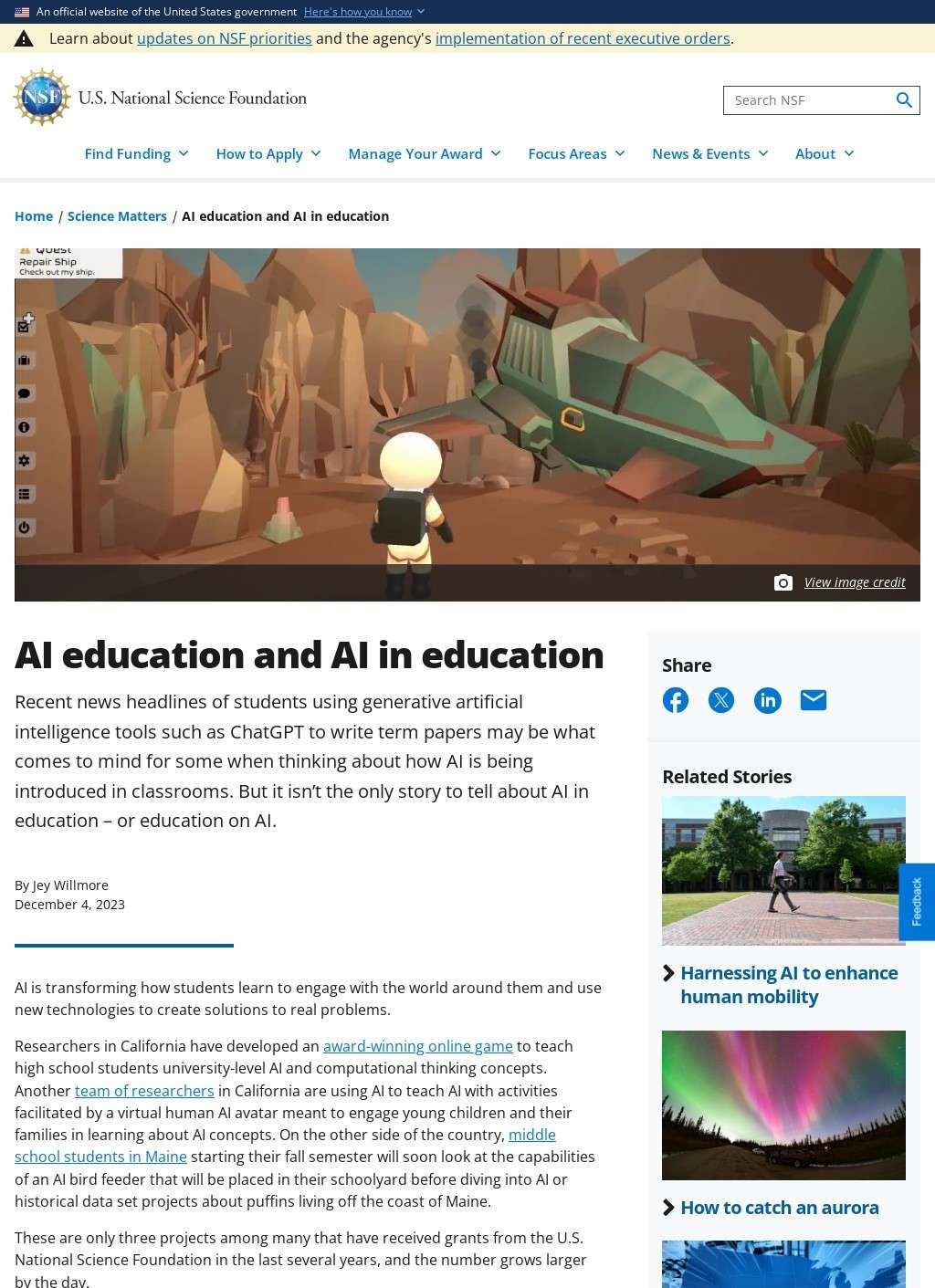The National Science Foundation has positioned itself as the federal government's leading voice in AI education research and development, with a portfolio spanning over three decades of investment in artificial intelligence learning initiatives. This resource serves as a central hub for understanding how federal research funding translates into practical educational tools and curriculum development. Unlike commercial training platforms, NSF's approach focuses on foundational research and broad accessibility rather than profit-driven course offerings.
The scope of NSF-funded projects reveals the breadth of AI education research happening across the country. From award-winning online games that teach high school students university-level AI concepts to interactive exhibits designed for elementary school children, these initiatives demonstrate creative approaches to making complex technical concepts accessible to diverse age groups. The research extends beyond traditional classroom settings to include family-oriented learning experiences and community-based educational programs.
James L. Moore III, NSF's assistant director for STEM education, emphasizes the agency's leadership role in this space, noting that NSF has been "leading the AI frontier, not chasing it." This perspective reflects in the comprehensive nature of their educational initiatives, which address not just technical skills but also ethical considerations, bias awareness, and responsible AI development practices. The long-term research approach allows for deeper investigation into effective teaching methodologies than commercial platforms typically undertake.
One of NSF's most significant contributions to the field is the development of national guidelines for teaching AI in K-12 settings. Prior to this initiative, virtually no standardized curriculum existed for introducing AI concepts to pre-college students. The AI for K-12 initiative website now provides educators with research-backed guidelines for developing age-appropriate AI instruction, filling a critical gap in educational resources.
The interactive AI exhibits developed through NSF funding showcase innovative approaches to complex concept education. Researchers at USC and UC Berkeley created hands-on experiences that break down AI concepts into digestible activities for elementary-aged children. These exhibits recognize the unique learning needs of younger audiences, including shorter attention spans and the need for immediately engaging content. The success of these approaches provides models for broader educational implementation.
Gaming platforms represent another successful application of NSF research funding. The ARIN-561 game teaches AI concepts through an engaging space exploration narrative, proving that serious educational content can be delivered through entertaining formats. Unexpected benefits emerged when refugee students used the game to learn English while reinforcing their AI knowledge, demonstrating the versatility of well-designed educational tools.
Environmental education integration shows how AI learning can connect students with their local ecosystems. The Maine bird feeder project combines AI technology with ecological observation, allowing students to understand both technical implementation and scientific research methodologies. This approach makes AI education relevant to students who might not otherwise consider technical careers while building computational thinking skills.
Access to NSF resources typically occurs through educational institutions and research partnerships rather than direct individual enrollment. The agency works primarily through grant recipients who develop and implement educational programs in schools and communities. Contact information for specific projects is available through individual research award pages, while general inquiries can be directed to NSF's education directorate through standard government communication channels during regular business hours.
